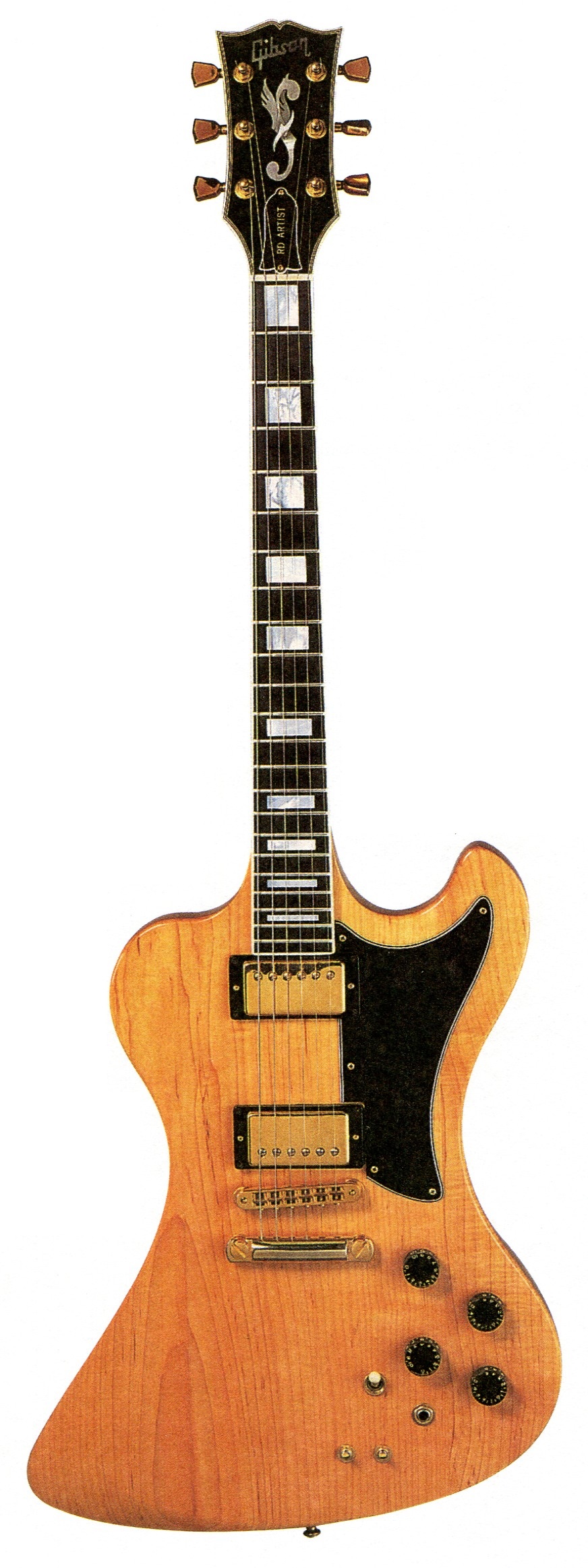Gibson RD Artist

In an effort to bring the elctric guitar into the modern world of solid-state electronics, Gibson created a model series in the late 1970s with “active” electronics, including expansion and compression controls, powered by an onboard none-volt battery.
Gibson developed the circuitry in conjunction with the Moog synthesizer company, which Norlin, Gibson’s parent company, had acquired in 1973. To reflect the high-tech creative atmosphere, Gibson named them RD, the commonplace techno-scientific abbreviation for Research & Development.
The RD Artist, introduced in 1979, was the most expensive of the three models (the lowest version did not have active electronics), and the Artist designation branched out to include traditional models that were fitted with active circuitry, e.g., ES-Artist, L.P. Artist and SG Artist.
While the RD models did have an intriguing body shape that looked like a softer, curvier version of the original reverse-body Firebirds, and while high-fidelity electronics seemed like a good idea on paper, guitarists ultimately wanted a Gibson simply to sound like Gibsons had sounded since the late 1950s, and the RD models were gone by 1972.
